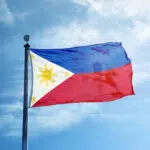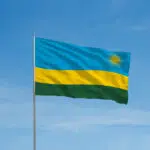Americans come together on July 4 to celebrate the nation’s birthday and Independence Day. On this day, most Americans enjoy grills in their backyards, at beaches, or in parks. Some partake in parades or marches and enjoy the fireworks that are often launched at dusk. We kick off the festivities with details, trivia, and anything else you need to know about Independence Day. Happy Fourth!
When is Fourth of July 2025?
The American glory of Red, White, and Blue, is celebrated on Independence Day on July 4.
History of Fourth of July
Although most of us already had this history lesson in school, we probably weren’t really paying attention as the clock ticked closer to recess or the end of the day. But we can’t fully appreciate our freedoms if we don’t know how we got them — and, more importantly, how close we came to losing them. The story of America’s independence is truly fascinating with more historical twists and turns than we can possibly get into here. But at least we can get you started with the basics.
In the 1700s, America wasn’t really a nation of ‘united states.’ Instead, there were 13 colonies with distinct personalities. From 1763 to 1773, Britain’s King George III increasingly placed pressure on the colonies as he and the British Parliament enacted a succession of draconian taxes and laws on them. Excessive taxes on British luxury goods like tea and sugar were designed to benefit the British crown without any regard for the hardships of the colonists. By 1764, the phrase “Taxation without representation is tyranny” spread throughout the colonies as the rallying cry of outrage.
The more the colonists rebelled, the more King George doubled down with force. Imagine if enemy soldiers not only had the right to enter your home but the soldiers could demand that you feed and house them. The Quartering Act of 1765 allowed British soldiers to do just that.
But the Stamp Act of 1765 became the straw that broke the colonists’ backs. Passed by Parliament in March, this act taxed any piece of printed paper, including newspapers, legal documents, ships’ papers — and even playing cards! As the colonial grumbling got louder and bolder, in the fall of 1768, British ships arrived in Boston Harbor as a show of force. Remember, the British Navy dominated the seas all over the world due to the far-reaching presence of the British Empire.
Tensions boiled over on March 5, 1770, in Boston Harbor during a street fight between a group of colonists and British soldiers. The soldiers fired shots that killed 47-year-old Crispus Attucks, the first American and Black man to die along with three other colonists in the Boston Massacre.
In 1773, the Boston Tea Party (from which today’s Tea Party Republicans get their name) erupted when colonists disguised as Mohican Indians raided a British ship, dumping all the tea overboard to avoid paying the taxes. Continued pressure led to resistance and the start of the Revolutionary War in the towns of Lexington and Concord when a militia of patriots battled British soldiers on April 19, 1775. Conditions were ripe for American independence.
When the first battles in the Revolutionary War broke out in April 1775, only a handful of colonists wished for total independence from Great Britain, and those who did were considered extremists.
However, halfway through the following year, many more colonists had come to lean more toward independence, as a result of growing hostility towards Britain and the spread of revolutionary views like those conveyed in the bestselling pamphlet published in early 1776 by Thomas Paine — “Common Sense.”
On June 7, 1776, the Continental Congress met at the Pennsylvania State House (later Independence Hall) in Philadelphia and Richard Henry Lee, the Virginia delegate, introduced a motion calling for the independence of the colonies. Amid heated debate, Congress rescheduled the vote on Lee’s resolution but appointed a five-man committee — including Thomas Jefferson of Virginia, John Adams of Massachusetts, Roger Sherman of Connecticut, Benjamin Franklin of Pennsylvania, and Robert R. Livingston of New York — to draft a formal statement justifying the defect from Great Britain.
On July 2, 1776, in a virtually unanimous vote, the Continental Congress voted in favor of Lee’s resolution for independence, and on July 4th, it formally adopted the Declaration of Independence, which had been written largely by Jefferson. Ultimately, the drafting of the Declaration of Independence was a contentious process. After much debate over what to include and what to leave out, Thomas Jefferson, tasked with pulling the document together, envisioned a nation where “Life, Liberty and the pursuit of happiness” crystallized the very meaning of being an American. The document proclaimed the 13 American colonies’ liberation from Britain and reaffirmed their rights as free men — declaring that they were no longer subject (and subordinate) to the monarch of Britain, King George III, and were now united, free, and independent states.
John Adams wrote to his wife Abigail that July 2 “will be celebrated, by succeeding Generations, as the great anniversary Festival” and that the celebration should include “Pomp and Parade…Games, Sports, Guns, Bells, Bonfires and Illuminations from one End of this Continent to the other.”
By an extraordinary coincidence, Thomas Jefferson and John Adams, the only two signatories of the Declaration of Independence later to serve as presidents of the United States, both died on the same day: July 4, 1826, which was the 50th anniversary of the Declaration. Although not a signatory of the Declaration of Independence, James Monroe, another Founding Father who was elected as president, also died on July 4, 1831, making him the third President who died on the anniversary of independence. The only U.S. president to have been born on Independence Day was Calvin Coolidge, who was born on July 4, 1872.
Fourth of July timeline
Britain’s King George III subjects colonial America to harsh taxes and laws, which benefits the Crown, not the colonists.
British Parliament's so-called Stamp Act taxes the colonists on any piece of printed paper including newspapers, legal documents, ships’ papers, and even playing cards.
British soldiers fire shots that kill 47-year-old Crispus Attucks, the first American and black man to die along with three other colonists in the Boston Massacre.
Disguised colonists take over a British ship and dump all the British tea overboard to avoid paying the taxes for it.
After spending two days on revisions, the Continental Congress approves the historical document's final wording.
Independence Day becomes a federal holiday.
Barbecues, parades, flag-raising ceremonies, and fireworks become the norm on Independence Day.
Americans celebrate the country's 200th birthday — the U.S. Mint issues a special Bicentennial quarter — with new designs featuring all 50 states.
INDEPENDENCE DAY TRADITIONS
American Independence Day parades go way back. By the summer of 1776, Americans celebrated the ‘death’ of British rule with mock funerals, revelry, and feasting. Americans still love to celebrate — and if you’re seeking a truly authentic experience, travel to Bristol, Rhode Island, home of America’s oldest Independence Day parade since 1785. Watch fife and drum corps marching bands, cartoon characters, and celebrities in vintage cars.
On Independence Day, we haul out family recipes for chili, barbecue ribs, chicken, and even tofu. We savor Louisiana gumbo and Maine lobster boils. There are zesty potato salads and delicious sweet corn roasted on the cob. Pies and cakes are laid out. Independence Day lets you get your patriotic grub on.
They chirp, whiz, and bang. Fireworks originated with the ancient Chinese, spread to Europe, and later added colorful displays to early American Independence Day events. Both Boston and Philadelphia launched fireworks on July 4, 1777. John Adams told his wife, Abigail, that Independence Day “ought to be solemnized with pomp and parade, bonfires and illumination.” This year, enjoy your Independence Day finale with a phantasmagorical fireworks display!
INDEPENDENCE DAY BY THE NUMBERS
2.5 million – the estimated number of people living in the newly independent nation in 1776.
327 million – the estimated population of the country in 2018.
56 – the number of signers of the Declaration of Independence.
1st – signer was John Hancock.
70 – the age of the oldest of the signers, Benjamin Franklin.
$4.0 million – the dollar value of U.S. imports of American flags in 2013.
$781,222 – the dollar value of U.S. flags exported in 2013.
$302.7 million – the annual dollar value of shipments of fabricated flags, banners, and similar emblems by the country’s manufacturers.
1 in 4 – the number of people who will set off their own fireworks.
150 million – the number of wieners consumed on the holiday nationwide.
Fourth of July FAQs
What does the 4th of July mean?
The 4th of July is America’s Independence Day, and the annual celebration of the nation.
How old is America today?
As of 2021, the United States of America is 245 years old.
What is the most famous text in the Declaration of Independence?
The best-known part of the Declaration of Independence is “We hold these Truths to be self-evident, that all Men are created equal, that they are endowed by their Creator with certain unalienable Rights, that among these are Life, Liberty and the Pursuit of Happiness … “
What fun ways can I celebrate Independence Day?
Parades and grills are commonplace on Independence Day but if you’re looking to go the extra mile when we suggest you take a look at our list of Fourth of July nail ideas to get you in the mood for celebrating.
Fourth of July Activities
Read the Declaration of Independence
Most Americans have never actually read the Declaration of Independence. But if it weren't for this short but historically significant document, they may not have been able to spend the day grilling or lighting fireworks, and definitely wouldn't have had the day off.
Watch fireworks
It's a blast — in more ways than one. Gazing at fireworks on the Fourth is a tradition that goes back centuries. In fact, John Adams alluded to this type of celebration in a letter he wrote to his wife Abigail on July 3, 1776.
Visit a national landmark or historical site
America is full of fascinating historical landmarks and sites. No matter where in the country you live, there is almost certainly a site of historical importance nearby. Some ideas could include a Native American reservation, a Civil War battleground, a government building, or a war memorial.
5 Fascinating Facts About The Declaration Of Independence
John Adams refused July 4
Because the actual vote for independence took place on July 2, 1776, John Adams refused to recognize celebrations for July 4.
Technically…
The Declaration of Independence was finalized on July 4, but most of the signers actually signed the document on August 2, 1776.
Edits and revisions
There were a total of 86 edits made to the original draft written by Thomas Jefferson.
Independence wasn’t the only reason
The Declaration of Independence was penned down formally so that colonies seeking foreign allies could legally declare themselves free from the British.
It’s not a map, but…
There isn’t a treasure map as shown in the movie “National Treasure,” but there is actually something written on the back of the Declaration of Independence — “Original Declaration of Independence dates 4th July 1776.”
Why We Love Fourth of July
It's the most delicious day of the summer
There are few days of the year that offer as much food variety as the Fourth of July. Steak? Check. Chicken wings? Yep. Fresh strawberry pie? Absolutely. Macaroni and cheese? You got it. No matter what you're craving, it's sure to be available on Independence Day.
We're all in this together
Admit it, the Fourth of July makes you feel giddy. Maybe it's the parades, the BBQs, or, most likely, the fireworks. This is the one night of the year you can watch the sky light up, while surrounded by children laughing, dogs barking, and patriotic music playing.
You can wear whatever you want — as long as it's red, white, and blue
That bandana you never get to wear? That decades-old T-shirt with an American flag on it? Those are all fair game on Independence Day — as long as they're red, white, and blue.
Fourth of July dates
| Year | Date | Day |
|---|---|---|
| 2025 | July 4 | Friday |
| 2026 | July 4 | Saturday |
| 2027 | July 4 | Sunday |
| 2028 | July 4 | Tuesday |
| 2029 | July 4 | Wednesday |
How to Say Fourth of July in Other Languages
| Language | Translation |
|---|---|
| Swedish | Sveriges Nationaldag |
| Spanish (Spanish) | Grito de Dolores (Mexico) |
| Polish | Święto Niepodległości |
| French | La Fête Nationale |
| Spanish (Spanish) | Fiestas Patrias (Perú) |





















